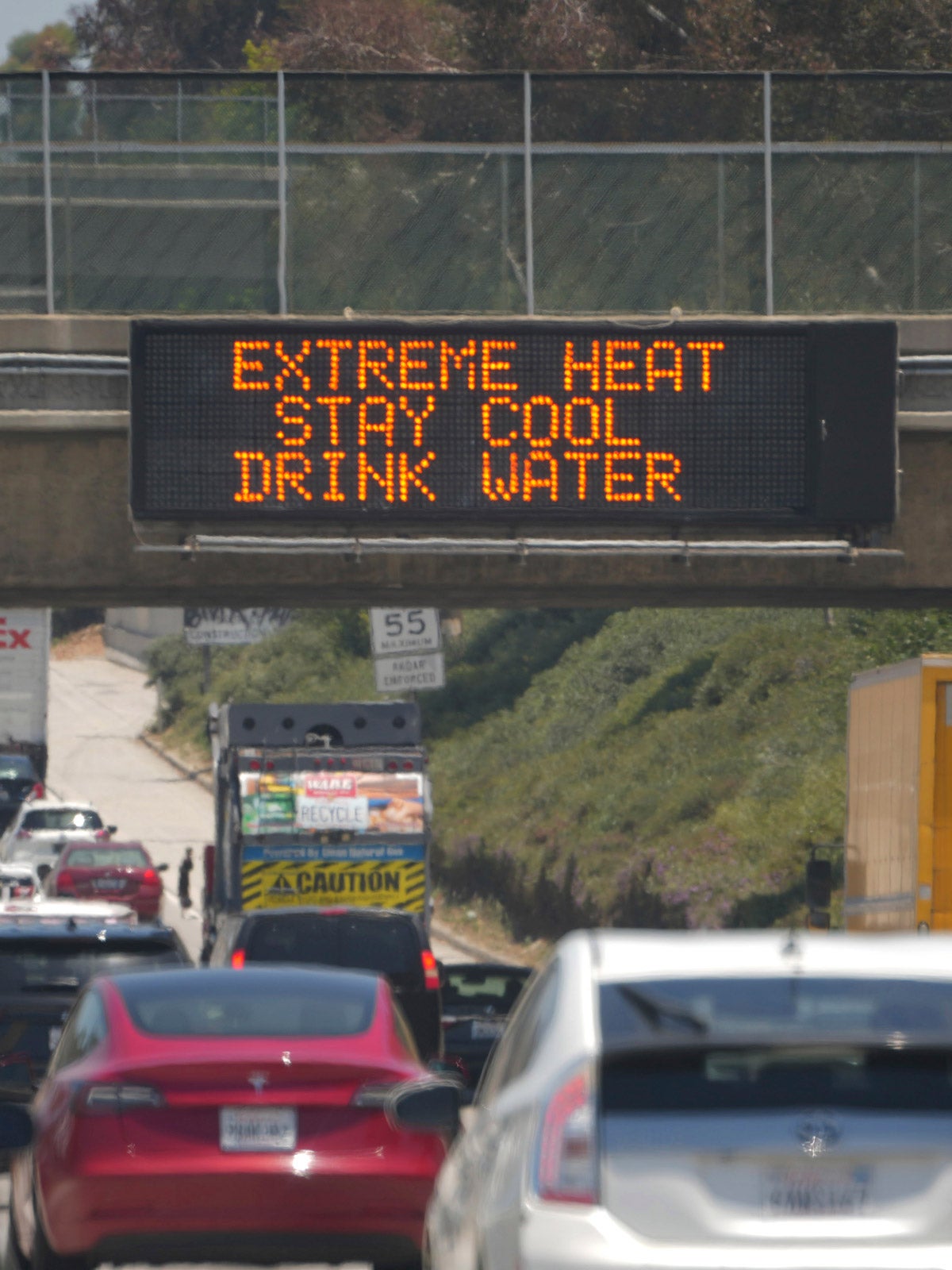
Opinion
Why “climate resilience” isn’t actually a solution
This article was originally published by Undark.
Building climate resilience—an ability to adapt to climate disasters—defines the U.S. Department of Health and Human Services’ response to the climate crisis. The stated purpose of HHS’s Climate Action Plan is “to enhance resilience and adaptation to climate change throughout the activities of HHS.” The department’s primary climate-related programmatic effort is the Centers for Disease Control and Prevention’s Building Resilience Against Climate Effects, or BRACE, which “allows state health officials to develop strategies and programs to help communities prepare for the health effects of climate change.”
That HHS has adopted resilience as policy without explanation or public discussion is concerning. When unpacked, building resilience is an incoherent response by the federal entity responsible for protecting Americans’ health in the face of climate disaster.
Sign up for Harvard Public Health
Delivered to your inbox weekly.
Ecologists first used resilience in the 1970s to describe the capacity of nonhuman living systems to adapt to danger or disaster. The concept has since become adulterated. The federal government defines it simply as “the ability to adapt to changing conditions and prepare for, withstand, and rapidly recover from disruptions.” Resilience now assumes the ability of organizations, communities, and individuals to quickly return to business or life as usual after calamity. Resilience encourages the growth of a culture of preparedness because a future defined by endless cycles of disaster and recovery requires continual adaptation. Building health care climate resilience means accommodating, withstanding, or recovering from air pollution resulting from fossil fuel combustion and anthropogenic warming.
For health care policymakers, building climate resilience presents several insurmountable problems.
Resilience fails to appreciate that harms to human health caused by the climate crisis are innumerable and unrelenting—and potentially impact everyone, everywhere, always. For example, the World Health Organization concluded in 2022 that 99 percent of the global population is exposed to air pollution that threatens their health. More specifically, a recent study concluded that for the more than 60 million Medicare beneficiaries, no safe threshold for exposure exists for the chronic effect of fine particulate matter (particles 2.5 micrometers or less in diameter), largely the result of fossil fuel combustion. Another 2022 study found that nearly 60 percent of known infectious diseases can be aggravated by hazards or pathways related to climate breakdown.
In 2022, the United Nations’ Intergovernmental Panel on Climate Change’s Sixth Assessment Report concluded that the prospects for climate-resilient development become increasingly limited if current greenhouse gas emissions do not rapidly decline in the near term, especially if average global warming exceeds 1.5 degrees Celsius (2.7 degrees Fahrenheit). Emissions have not rapidly declined. They are the highest on record. And for 12 consecutive months ending in June, global warming averaged 1.64 Celsius. Consecutive months of record temperatures caused the secretary-general of the World Meteorological Organization to announce, in March, “The WMO community is sounding the Red Alert to the world.” In a June speech, the U.N. Secretary-General concluded, “We need an exit ramp off the highway to climate hell.”
The inherent problem with resilience is that—as Brad Evans and Julian Reid, Sarah Bracke, and others explained more than a decade ago—it’s not a solution but rather a cause. Resilience thinking assumes danger or disaster is endemic, a fait accompli. Outside of our control, climate disaster is made acceptable. As such, resilience leaves us apprehensive about the future or denies the capacity to imagine one beyond climate breakdown. With our lives in permanent danger, not securable, resilience is a form of subjectification, negating human agency.
Those who are the least climate resilient are, moreover, minoritized populations. They pay the greatest climate penalty. They are forced to accept the conditions of their own vulnerability. In effect, resilience creates a permanent climate-at-risk population. Climate apartheid is a given.
Living life permanently exposed to climate disaster, having to forever adapt or react to climate threats, is—in a word—exhausting. Roy Scranton described it in his book, Learning to Die in the Anthropocene, as continuing to act “as if tomorrow will be just like yesterday, growing less and less prepared for each new disaster as it comes, and more and more desperately invested in a life we can’t sustain.” Not surprisingly, Ajay Singh Chaudhary titled his recently published study of climate politics “The Exhausted of the Earth.” Chaudhary wrote, “Resilience is the categorical imperative of business-as-usual; it is crisis managers buying time. For others, resilience is exhausting.”
Resilience itself can become a significant threat. When resilience succeeds, it can become indistinguishable from the climate disaster it sought to overcome. In health care, for example, Medicaid and other payers recently decided to pay for air conditioners—and, presumably, for the carbon pollution they emit.
Inherently reactionary, resilience teaches apathy, fatalism, and a sense of perverse optimism because building resilience makes it impossible to attain a desired future or conceive of a changing world. Life lacks a sense of coherence, or what medical sociologist Aaron Antonovsky called salutogenesis. In doing so, resilience negates or at least undermines resistance or efforts to prevent climate disaster. Resistance is futile because climate threats and disaster are, again, inescapable.
Resilience is an attractive political policy because it gives license to a climate disaster–ridden world. Human life, like non-human living systems, is a permanent process of ongoing adaptation to disaster. As Evans and Reid wrote in 2013, policymakers “want us to abandon the dream of ever achieving security and embrace danger as a condition of possibility for life in the future.” Ecological disaster is viewed as necessary for our development. In the words of philosopher Frederic Jameson, “it is easier to imagine the end of the world than to imagine the end of capitalism.” Chaudhary argued that resilience apologizes for exploitative resource use and environmental degradation: “Attachment to the ideal of resilience only maintains a world which demands it.”
With resilience there is, in effect, no climate crisis. Neither directed federal financing nor stringent federal regulations to eliminate GHG emissions are necessary. Instead, as Adrienne Buller explained in her 2022 book, The Value of a Whale, a combination of regulatory relief and greater prioritization of market efficiency is the superior approach to climate policy. Resilience allows for a “political imaginary that refuses to envisage anything other than,” Evan and Reid concluded, “the bleak current state of political affairs.” Resilience is nihilism, a will to nothingness, value-free governing. Chaudhary defined it as politically inert because resilience simply “counsels quiescence and parsimonious austerity.”
For HHS, resilience as policy explains why the department has failed under the Biden administration to promulgate any Medicare or Medicaid regulatory rules requiring the health care industry to reduce GHG emissions or improve climate-related health care—creating, for example, specific climate-related diagnostic codes and quality performance measures. It is cruelly ironic that HHS allows the health care industry to emit an estimated 553 million metric tons (610 million tons) of greenhouse gases annually, because these emissions disproportionately harm Medicare and Medicaid beneficiaries. Despite HHS’s mission to “enhance the health and well-being of all Americans,” resilience allows the department to simply publish a monthly Climate and Health Outlook forecasting how the public’s health will be harmed by unavoidable climate disasters. Per the June report, HHS’s responsibility amounts to noting that “tornadoes can happen anywhere and anytime,” “there are many different types of flooding,” the 2024 Atlantic Hurricane Season is predicted to be “above-normal,” and “wildfires affect health in many ways.”
For HHS, climate resilience leaves the department the author of its own endangerment. For Americans, we’re left hopeless.
Image: Kirby Lee / AP Photo


